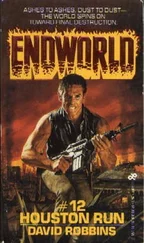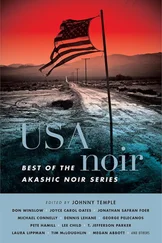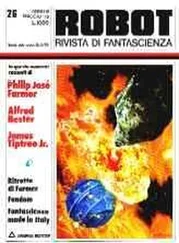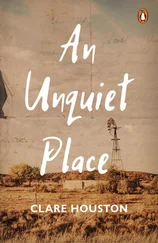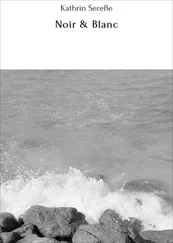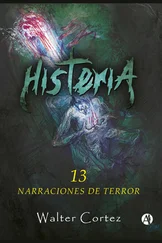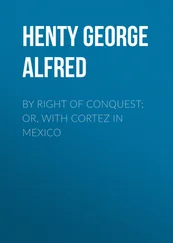Sarah Cortez - Houston Noir
Здесь есть возможность читать онлайн «Sarah Cortez - Houston Noir» весь текст электронной книги совершенно бесплатно (целиком полную версию без сокращений). В некоторых случаях можно слушать аудио, скачать через торрент в формате fb2 и присутствует краткое содержание. Город: New York, Год выпуска: 2019, ISBN: 2019, Издательство: Akashic Books, Жанр: Детектив, на английском языке. Описание произведения, (предисловие) а так же отзывы посетителей доступны на портале библиотеки ЛибКат.
- Название:Houston Noir
- Автор:
- Издательство:Akashic Books
- Жанр:
- Год:2019
- Город:New York
- ISBN:978-1-61775-706-8
- Рейтинг книги:3 / 5. Голосов: 1
-
Избранное:Добавить в избранное
- Отзывы:
-
Ваша оценка:
- 60
- 1
- 2
- 3
- 4
- 5
Houston Noir: краткое содержание, описание и аннотация
Предлагаем к чтению аннотацию, описание, краткое содержание или предисловие (зависит от того, что написал сам автор книги «Houston Noir»). Если вы не нашли необходимую информацию о книге — напишите в комментариях, мы постараемся отыскать её.
Houston Noir — читать онлайн бесплатно полную книгу (весь текст) целиком
Ниже представлен текст книги, разбитый по страницам. Система сохранения места последней прочитанной страницы, позволяет с удобством читать онлайн бесплатно книгу «Houston Noir», без необходимости каждый раз заново искать на чём Вы остановились. Поставьте закладку, и сможете в любой момент перейти на страницу, на которой закончили чтение.
Интервал:
Закладка:
Houston Noir

Introduction
A Cruel, Crazy Town
It’s a rare publisher who’ll let you write something really dark.
“What about the book clubs?” I’ve heard editors say. “Book clubs want something light to read while drinking wine, Gwen. Can you lighten it up?”
I can lighten it up, yes. I can even lighten up in general. But it hurts a little to do so, and a little more every time. It feels like lying, and until a writer sells film rights, lying feels like selling out.
That’s why it gave me immense pleasure to be charged with (and to charge for!) editing this book. It was pleasurable from the very beginning, when I contacted writers I knew and writers I wanted to know and invited them to write me something noir-ish. Several were already practiced in the dark (literary) arts and agreed off the bat. Others were unsure. “I’ve never written noir,” they told me. For those, I put on a pair of horns, picked up a pitchfork, and said, “But you could , couldn’t you? Don’t you have a story you’ve been wanting to tell — something tragic? Something full of anger? Something totally fucked up? ”
I saw the glints in their eyes, right through the e-mails on my monitor. Oh yes — they had ideas.
Then I received more e-mails, texts, and confessions over frozen mojitos: “My god... Writing this stuff is so much fun. I like it.” And I reveled in my newfound power to warp talented minds.
Then I received the stories. Oh man, the stories. They hurt me. They burned . Some made me cringe, some made me cry. One made me push away my laptop and hoot very loudly, like a barn owl overcome with shock and revulsion. Others made me laugh... then hate myself for laughing.
It turned out I had no power, after all — only the means to extend invitations to people with true power. Their writing toyed with my emotions, overwhelmed me, and left me weak.
I thought of you, then.
You, who like to read alone. And you who binge tear-jerking movies on Thanksgiving. You, the ones who laugh inappropriately at serious moments and draw disgusted glares. Who watch the latest awful news and roll your eyes, thinking, This is probably just what we deserve.
If you also live in this city I love, then you definitely know the effort required to lighten up and the futility thereof. You can’t ignore the mentally ill people shouting between our beautiful towers of glass. You’ve tasted the sugarcoating of words like Generously sponsored by Enron and Hundred-year floodplain , and you spit it out. You’ve heard the promises that things will get better, and yet you’re stocked up on canned goods, bottled water, and ammo. You know happy endings don’t come easy, and a World Series win doesn’t ease the pain of decades of football heartbreak.
And yet you stay.
I know what you’re looking for: someone to lay it on the line. Something to make you feel less alone, less misunderstood. A fucked-up story to indulge in, and not (for once ) because you had no choice.
The stories in this book are sectioned by neighborhood type, using euphemisms and clichés local realtors employ to sell our socioeconomic topography. Their settings range wide across the three near-concentric circles of cement that define our city. There’s the Inner Loop, or Interstate 610, that encircles our Downtown, our trendiest enclaves, and our oldest neighborhoods that, as of this writing, represent every phase of the gentrification cycle and all the seething resentment that engenders.
Our second ring of hell humidity, between the Loop and Beltway 8, is the middle ground for Houstonians who can’t afford the Inner Loop but don’t want to spend more than an hour on the freeway per commute. Then comes FM 1960 (or State Highway 6) and the first layer of our true suburbs. Beyond that is an expanse of land being chewed up, bit by bit, by the city’s maw.
In a 2004 essay, Hunter S. Thompson described Houston as a “cruel, crazy town on a filthy river in East Texas with no zoning laws and a culture of sex, money and violence. It’s a shabby, sprawling metropolis ruled by brazen women, crooked cops and super-rich pansexual cowboys who live by the code of the West — which can mean just about anything you need it to mean, in a pinch.” For what it’s worth, that quote is now posted on a banner somewhere downtown and regularly, gleefully repeated by our local feature writers.
Houston is a port city on top of a swamp and, yes, it has no zoning laws. And that means it’s culturally diverse, internally incongruous, and ever-changing. At any intersection here, I might look out my car window and see a horse idly munching St. Augustine grass. And, within spitting distance of that horse, I might see a “spa” that’s an obvious brothel, a house turned drug den, or a swiftly rising bayou that might overtake a car if the rain doesn’t let up. Because I’ve lived here so long, there’s no story in this book I can’t easily imagine taking place. Some of the plots might seem outrageous, but not compared with real-life crimes that have taken place here in the last fifty years, which have inspired books, TV movies, and Wikipedia-readers’ nightmares.
River Oaks, one of the wealthiest neighborhoods in the state, has been home to politicians, Texan and Saudi oil barons, pastor Joel Osteen, and Jeff Skilling of Enron infamy. From 1969 to 1973, the neighborhood was rocked by the mysterious death of socialite horsewoman Joan Robinson Hill, the subsequent murder of her husband Dr. John Hill, and the murder of his murderer after that. This story is immortalized in Blood and Money by Thomas Thompson.
Between 1970 and 1973, serial killer and Heights resident Dean Corll, nicknamed the Candy Man, murdered at least twenty-eight people. The Halloween after that, optician Ronald Clark O’Bryan became Houston’s second Candy Man — killing his son Timothy for the insurance money, by feeding him poisoned Pixy Stix. O’Bryan tried to cover up his crime by giving the poisoned candy to his daughter and three other children as well, spawning a generation of trick-or-treat fears.
Throughout the 1980s and 1990s, orthopedic surgeon and Museum District resident Eric Heston Scheffey came under fire for performing unnecessary surgeries that disabled and sometimes killed his patients. In 2005, his license to practice medicine was finally revoked.
In 2002, Friendswood dentist Clara Harris was convicted of manslaughter for running over her cheating husband with a Mercedes-Benz in the parking lot of a Hilton hotel, with his daughter in the car, while filmed by the private investigator she’d hired.
In 2007, astronaut Lisa Marie Nowak drove from Houston to the airport in Orlando, Florida, where she attacked and failed to kidnap US Air Force Captain Colleen Shipman, the new girlfriend of Nowak’s former boyfriend, astronaut William Oefelein.
Several of the stories in this book discuss human trafficking. According to a study by the University of Texas at Austin’s School of Social Work, there were an estimated 313,000 victims of human trafficking in the state in 2016. Houston is widely considered a hub for such activity due to its port, its proximity to Mexico, and its many conventions and sporting events.
Right now, Houston is one of the most ethnically diverse cities in America. That creates opportunities for clashes and crimes in a wide variety of cultural combinations, throughout the city. This, too, is poignantly reflected in these stories.
Overall, this collection represents the very worst our city has to offer, for residents and visitors alike. But it also presents some of our best voices, veteran and emerging, to any reader lucky enough to pick up this book.
Читать дальшеИнтервал:
Закладка:
Похожие книги на «Houston Noir»
Представляем Вашему вниманию похожие книги на «Houston Noir» списком для выбора. Мы отобрали схожую по названию и смыслу литературу в надежде предоставить читателям больше вариантов отыскать новые, интересные, ещё непрочитанные произведения.
Обсуждение, отзывы о книге «Houston Noir» и просто собственные мнения читателей. Оставьте ваши комментарии, напишите, что Вы думаете о произведении, его смысле или главных героях. Укажите что конкретно понравилось, а что нет, и почему Вы так считаете.

